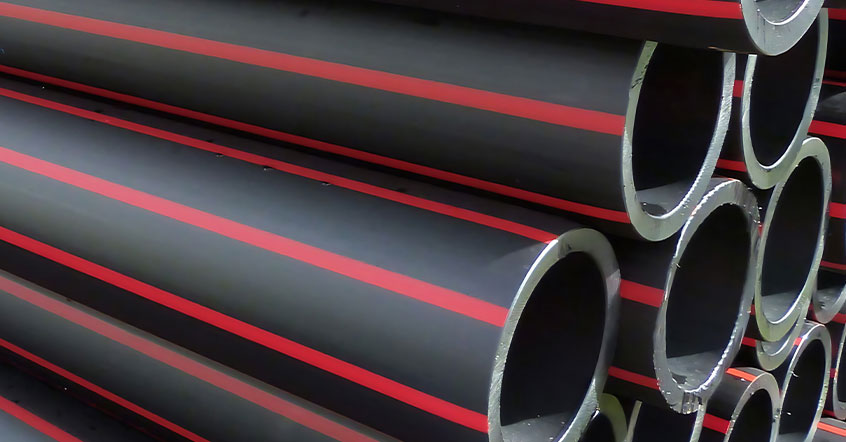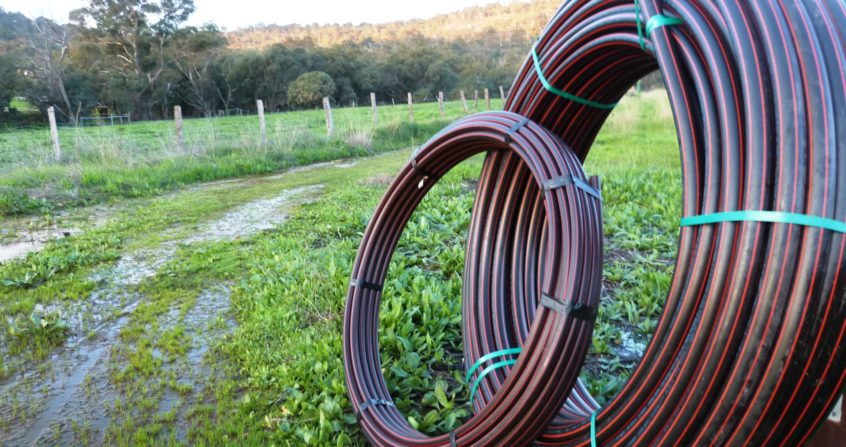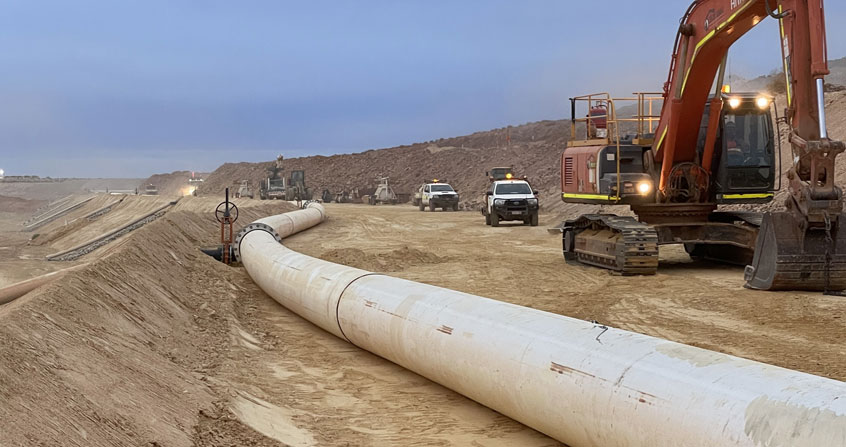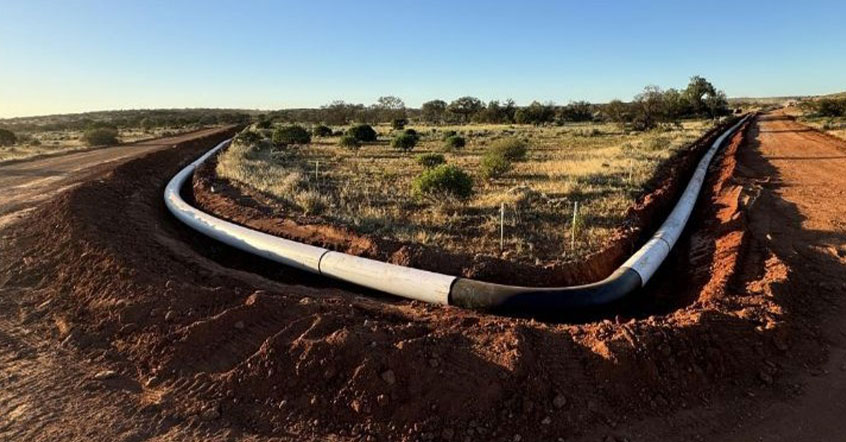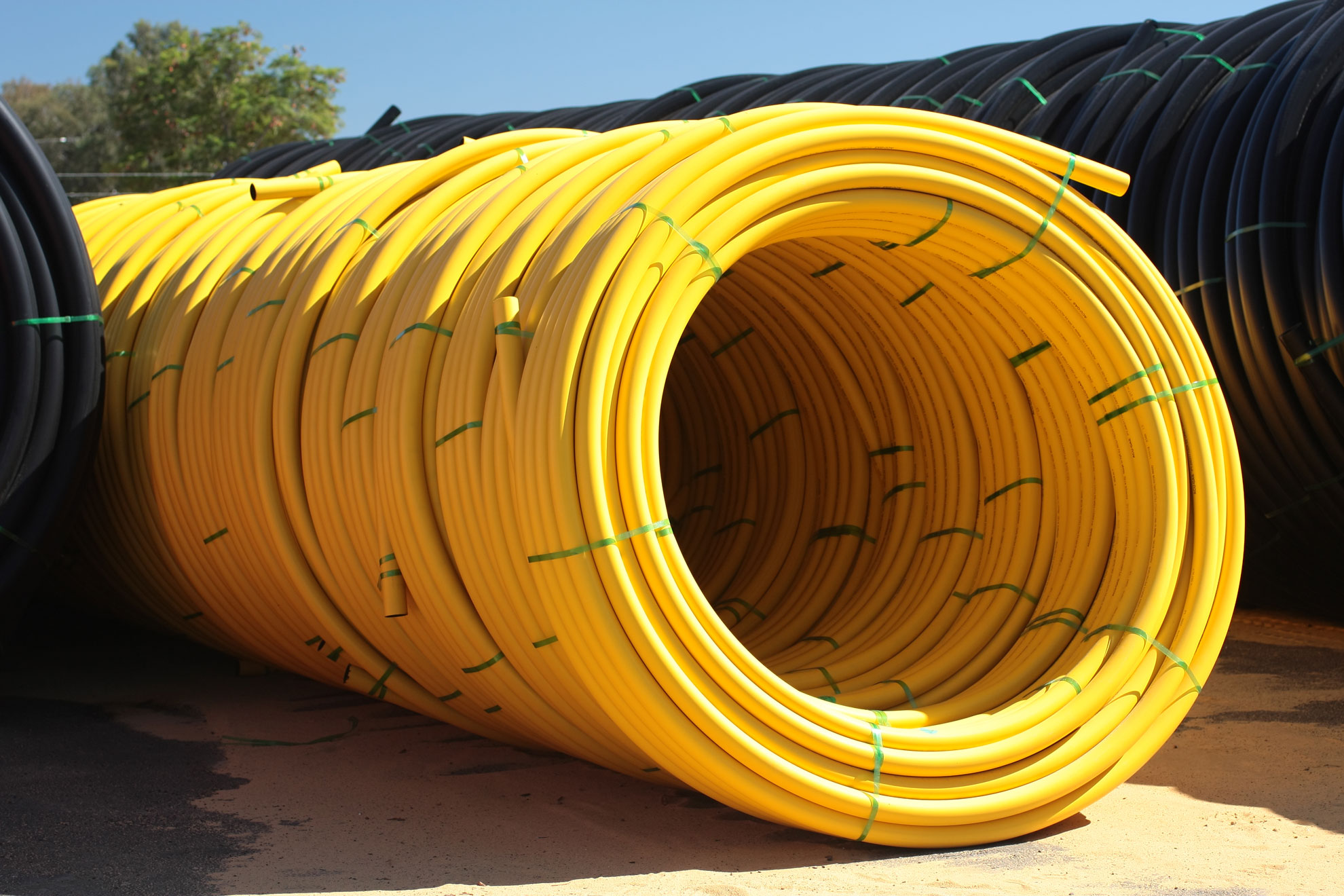HDPE Pipe, also known as PE Pipe, stands as a versatile and durable piping system with applications in fluid and gas transfer worldwide.
HDPE Piping Solutions offer a compelling combination of toughness, corrosion resistance, excellent chemical resilience, and lightweight design. These impressive characteristics make HDPE the preferred choice for cost-effective and reliable piping systems, including specialised applications like horizontal direct drilling.
Unlike low-density polyethylene, HDPE exhibits minimal branching, resulting in stronger inter-molecular forces and higher tensile strength. This exceptional strength, coupled with superior specific strength, surpasses the minor density difference. Additionally, HDPE’s harder, more opaque nature and ability to withstand higher temperatures (up to 120 °C/248 °F for short-term exposures) make it suitable for a wide range of applications.
Acu-Tech Piping Systems leverages the benefits of polyethylene to manufacture robust high-performance poly pipes and polyethylene pressure pipes. Our commitment to providing cutting-edge HDPE Piping Solutions ensures you have access to the most reliable and efficient piping systems for potable water, wastewater (storm and sewage), and other demanding applications.
Where can HDPE pipes be used?
HDPE pipes can be used in the Irrigation, Civil, Mining, and Plumbing sectors. Specific applications include
- Water Supply Systems: HDPE pipes are widely used for potable water supply due to their durability and corrosion resistance.
- Sewerage & Drainage Systems: Ideal for sewer systems because of their chemical resistance and flexibility.
- Gas Distribution: Commonly used for natural gas distribution due to their leak-proof and flexible nature.
- Irrigation Systems: Frequently utilized in agricultural and landscape irrigation systems due to their high impact resistance and ease of installation.
- Industrial Applications: Suitable for transporting chemicals and other industrial fluids because of their resistance to a wide range of chemicals.
- Mining Industry: Used for slurry and tailings pipelines, as well as water supply lines in mining operations.
- Fire System Supply Lines: Employed in fire water supply systems due to their reliability and pressure resistance.
- Electrical and Communications Conduits: Used as protective conduits for electrical and communication cables.
- Marine Applications: Suitable for underwater pipelines and outfall systems due to their buoyancy and resistance to saltwater.
- Stormwater Drainage: Used for managing stormwater due to their durability and large diameter availability.
Polyethylene’s toughness, immunity from corrosion, excellent resistance to chemicals and low weight has contributed to its continued appeal for use in these situations, especially where cost-effective and reliable piping systems are required.
What is the difference between polyethylene and HDPE?
HDPE is actually a type of polyethylene, (High Density Poly-Ethylene) which has been modified to give it a high level of impermeability and strong molecular bond, making it suitable for high pressure pipelines.
Are PE and polyethylene the same thing?
Yes, PE is short for polyethylene!
Can HDPE be recycled?
Yes — HDPE is commonly recycled, and has the number “2” as its resin identification code. The ability to be easily recycled makes HDPE very environmentally friendly, and more sustainable choice than steel or concrete pipes.
Is HDPE and PE100 the same thing?
No, PE100 is a specific class of HDPE (High-Density Polyethylene). The “100” refers to the Minimum Required Strength (MRS), which is based on the material’s long-term strength as defined by ISO 12162. Current standards commonly specify PE100 due to its superior performance. PE80 is a lower grade compared to PE100, while PE120 is an advanced grade that is still under development. Each grade is engineered to withstand environmental conditions and address issues from previous grades, such as rapid crack propagation, slow crack growth, and chemical resistance.
What does MRS poly pipe mean?
MRS stands for “Minimum Required Strength”. Poly Pipe MRS is always calculated at an ambient temperature of 20°C, and is the minimum required strength at which PE compound is defined. The MRS is the lower predicted limit of the hydrostatic strength at a time of 50 years, rounded down.
Why is polyethylene plastic pipe considered cost effective?
Polyethylene, as HDPE, can be recycled into other products, which is more cost-effective than manufacturing new products from virgin plastic.
What is rapid crack propagation?
Rapid crack propagation is a phenomenon that can occur in piping systems when a long, fast-moving brittle crack propagates through the pipe material. Cast iron pipes and plastic pipes can experience this phenomenon if the pipe grade and Minimum Required Strength (MRS) are not properly considered during manufacturing. This issue can also occur as the pipes age.
What is the difference between pressure pipe and non-pressure pipe in water applications?
Water supply systems rely on two types of pipes: pressure pipes and non-pressure pipes. Pressure pipes are designed to withstand externally generated pressure, such as from pumps or flushing systems, leading to a higher pressure rating. Non-pressure pipes rely on gravity and the weight of the water itself to create pressure, without the need for external forces.
What is the difference between PVC pipe and HDPE pipe?
PVC (polyvinyl chloride) is a vinyl polymer commonly used in construction projects. HDPE (high-density polyethylene) is a thermoplastic made from petroleum. PVC pipes are heavier and stronger, while HDPE pipes are harder and more heat-resistant.
What are compression fittings?
Compression fittings, along with spigot fittings and PE electrofusion fittings, are used to join two pipes together. These fittings are suitable for a variety of applications and are widely used in Australia for their reliability and versatility. As a top choice for rural, civil and industrial in joining pipes, Acu-Tech provides a wide range of common or less common compression fittings.

